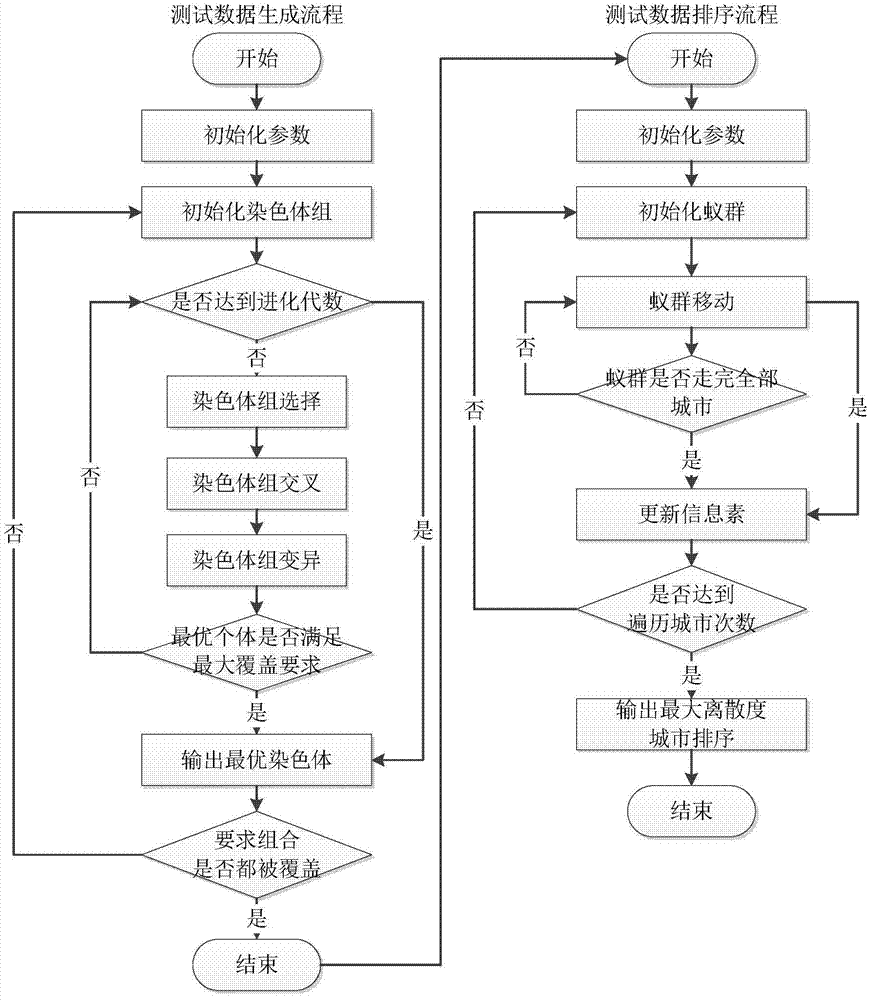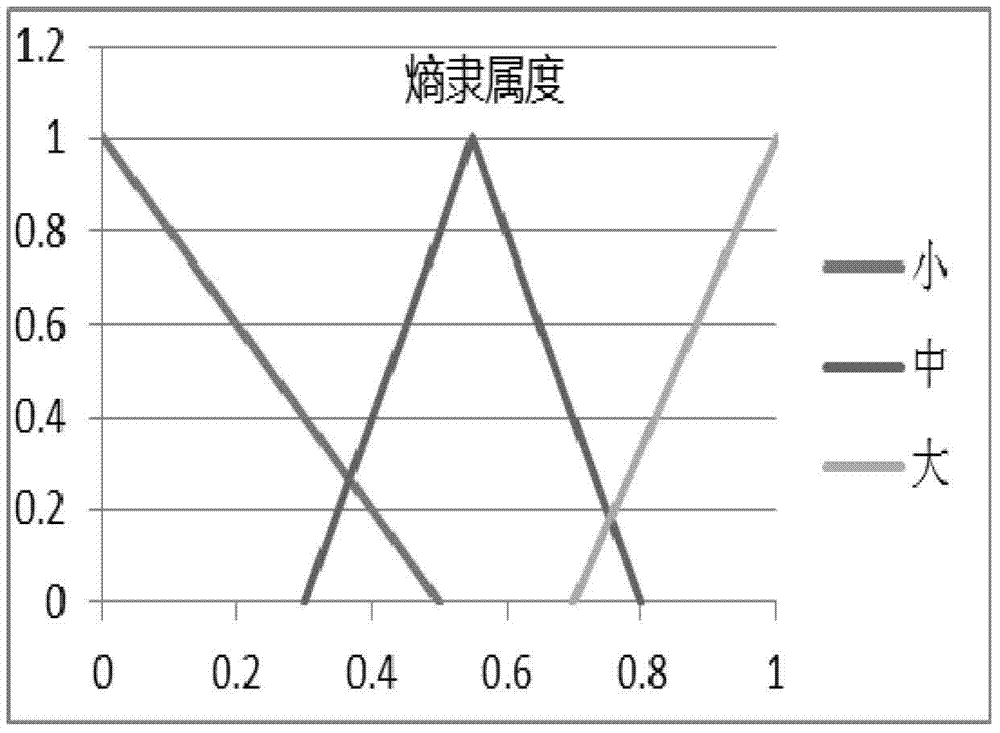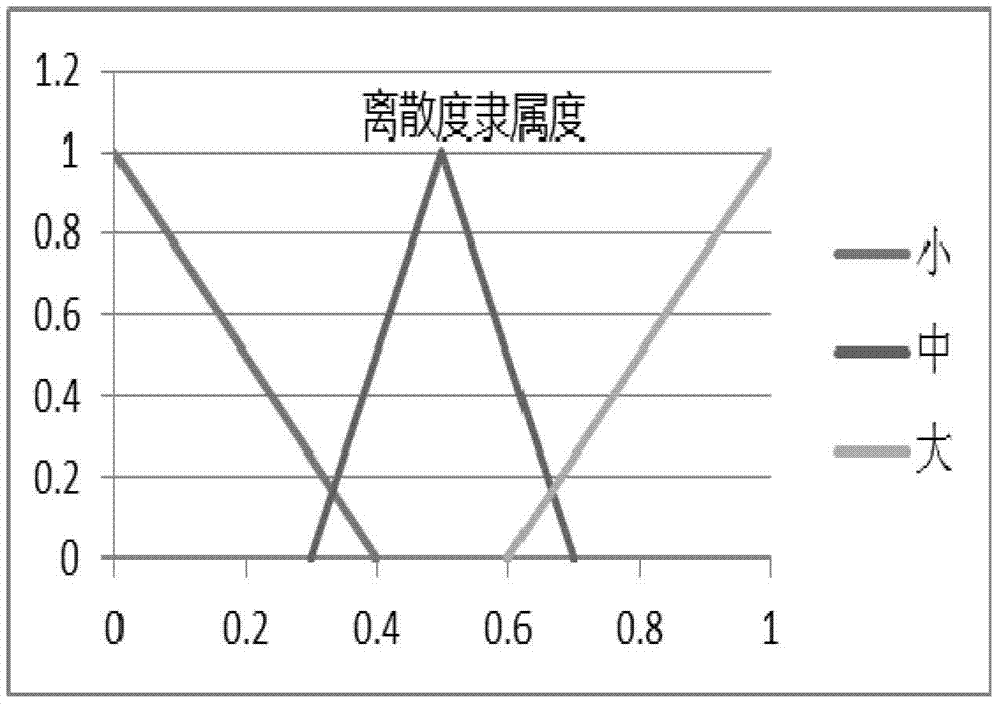Embedded Software Test Data Generation Method Based on Fuzzy Genetic Algorithm
A fuzzy genetic algorithm and embedded software technology, applied in software testing/debugging, genetic modeling, etc., can solve the problems of large scale of test data sets and long generation time, so as to improve the probability of fault detection, reduce the generation time, and reduce the scale Effect
- Summary
- Abstract
- Description
- Claims
- Application Information
AI Technical Summary
Problems solved by technology
Method used
Image
Examples
specific Embodiment approach 1
[0025] Specific embodiment one: the embedded software test data generation method based on fuzzy genetic algorithm, related concepts are as follows:
[0026] (1) The related concepts of genetic algorithm are as follows:
[0027] (1) Chromosome
[0028] A piece of test data T=(a 1 ,a 2 ,...,a k ) can be considered as a chromosome, a ip ∈[0,v ip -1], (ip=1,2,...,k), the value a of the ipth parameter in the test data T ip Considered to be the ipth gene on the chromosome, set v ip is the gene pool to which the gene belongs, and k is the number of genes on a chromosome; the gene at a certain position in the chromosome will select a new gene from the gene pool to mutate;
[0029] (2) Adaptive value function
[0030] Assume that the current existing test data set is A, and the set of all t-dimensional interactions not covered by A is Q, that is I is the t-dimensional interaction, H t The test system of embedded software is all t-dimensional interaction, Test data T in A...
specific Embodiment approach 2
[0089] Specific implementation mode two: in the step 1.4 described in this implementation mode, the method of fuzzy reasoning is used to solve p c , including the following steps:
[0090] 1.4.1: Fuzzification: Calculate the entropy and discrete membership degree of the population according to the membership function according to the population set, and activate the fuzzy rules according to the entropy and discrete membership degree values;
[0091] 1.4.2: Fuzzy reasoning: According to the entropy and discrete degree membership value of the population, infer the membership degree of the activated fuzzy rules according to the minimum value method;
[0092] 1.4.3: Defuzzification: According to the degree of membership of different fuzzy rules, the weighted average method is used Accurate calculation of crossover probabilities.
[0093] Other steps and specific parameters are the same as those in the first embodiment.
specific Embodiment approach 3
[0094] Specific implementation mode three: the process of calculating the entropy and dispersion degree of membership of the population in step 1.4.1 described in this implementation mode is:
[0095] If there are R subsets in the mth generation population, The number of individuals contained in each subset is and B m is the set of the mth generation population, then the population entropy is defined as:
[0096]
[0097] In the formula: ir r ∈[1,R]; N is the size of the population; when R=1, S N =0; when R=N, S N = 1;
[0098] According to the test data T 1 and T 2 Dispersion between Define the dispersion of the population as:
[0099]
[0100] In the formula: ir 1 ,ir 2 ∈[1,R] and ir 1 ≠ir 2 as a subset and Dispersion The weight of , when R=1, D N =0; when R=N, D N =1.
[0101] Other steps and specific parameters are the same as those in Embodiment 1 or Embodiment 2.
PUM
 Login to View More
Login to View More Abstract
Description
Claims
Application Information
 Login to View More
Login to View More - R&D
- Intellectual Property
- Life Sciences
- Materials
- Tech Scout
- Unparalleled Data Quality
- Higher Quality Content
- 60% Fewer Hallucinations
Browse by: Latest US Patents, China's latest patents, Technical Efficacy Thesaurus, Application Domain, Technology Topic, Popular Technical Reports.
© 2025 PatSnap. All rights reserved.Legal|Privacy policy|Modern Slavery Act Transparency Statement|Sitemap|About US| Contact US: help@patsnap.com



